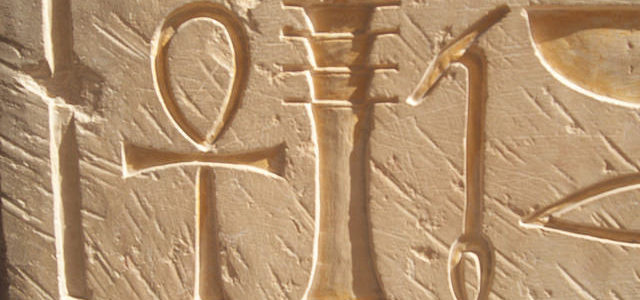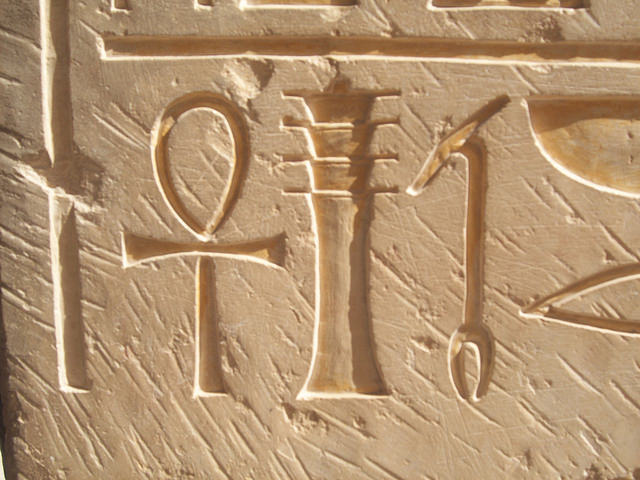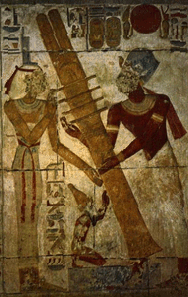
The Most important Egyptian symbols
Posted On March 23, 2019 at 6:08 am by TheEyeOfEgypt.com / Comments Off on The Most important Egyptian symbols

The three most important symbols, often appearing in all manner of Egyptian artwork from amulets to architecture, were the ankh, the djed, and the was scepter. These were frequently combined in inscriptions and often appear on sarcophagi together in a group or separately. In the case of each of these, the form represents the eternal value of the concept: the ankh represented life; the djed stability; the was power.
The three most important symbols, often appearing in all manner of Egyptian artwork from amulets to architecture, were the ankh, the djed, and the was scepter. These were frequently combined in inscriptions and often appear on sarcophagi together in a group or separately. In the case of each of these, the form represents the eternal value of the concept: the ankh represented life; the djed stability; the was power.
The ankh is an ancient Egyptian hieroglyphic symbol that was most commonly used in writing and in the art to represent the word for “life” and, by extension, as a symbol of life itself.

Djed
In the interpretation of the symbol as four columns, the number most frequently appearing in Egyptian iconography is represented: four. The number symbolized completeness and is seen in art, architecture, and funerary goods such as the Four Sons of Horos of the canopic jars, the four sides of a Pyramids

The scepter was a visual representation of the concept of “power” or “dominion.” Naturally, its earliest depictions in Egyptian art found it in the hands of the gods and goddesses. The scepter was often also carried by the pharaohs.